
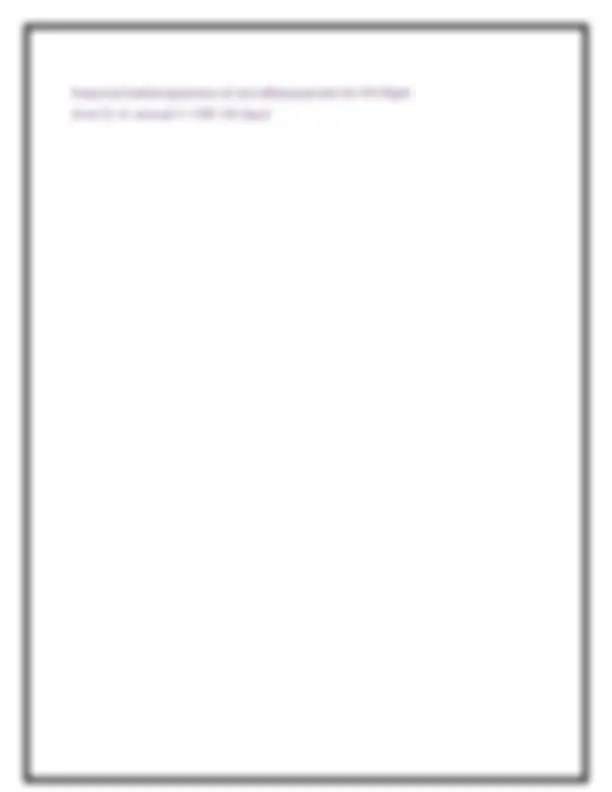
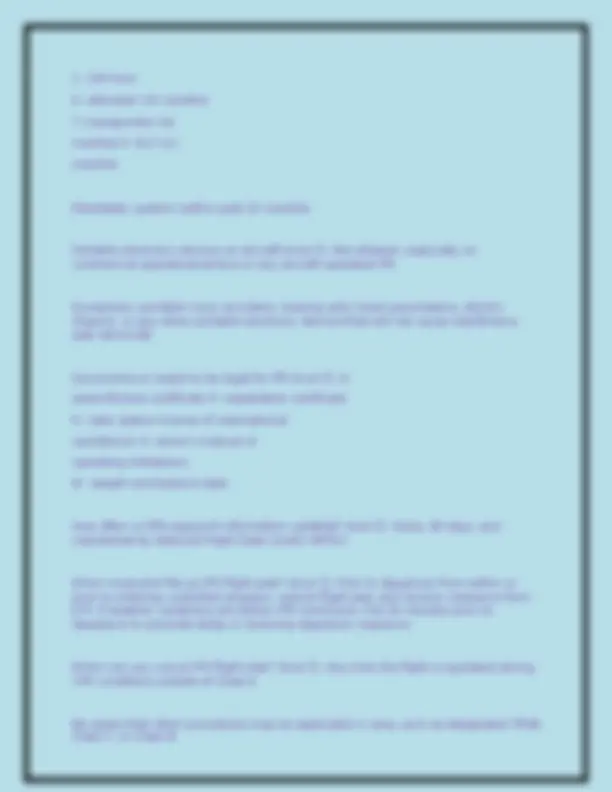
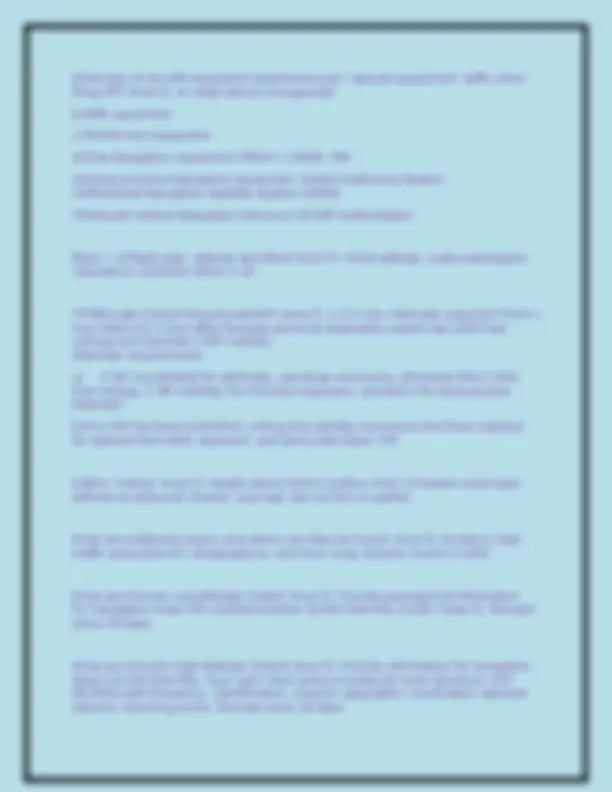
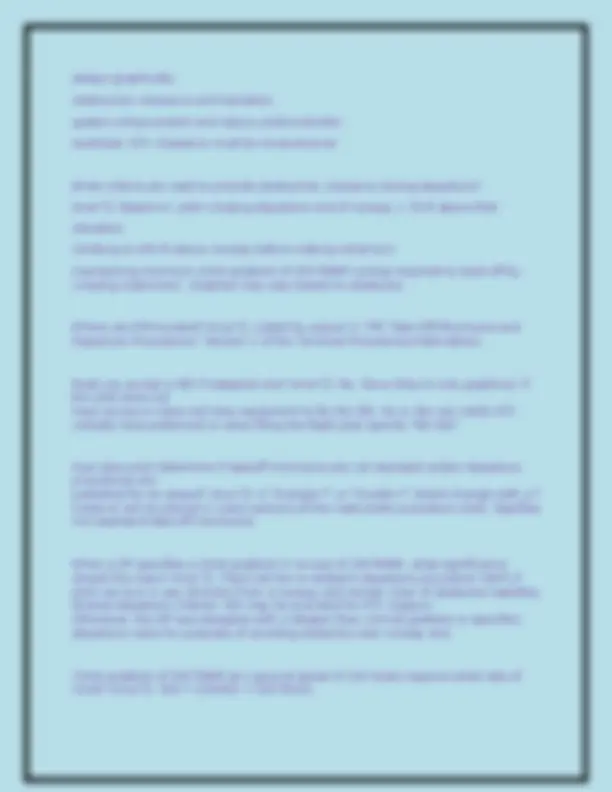
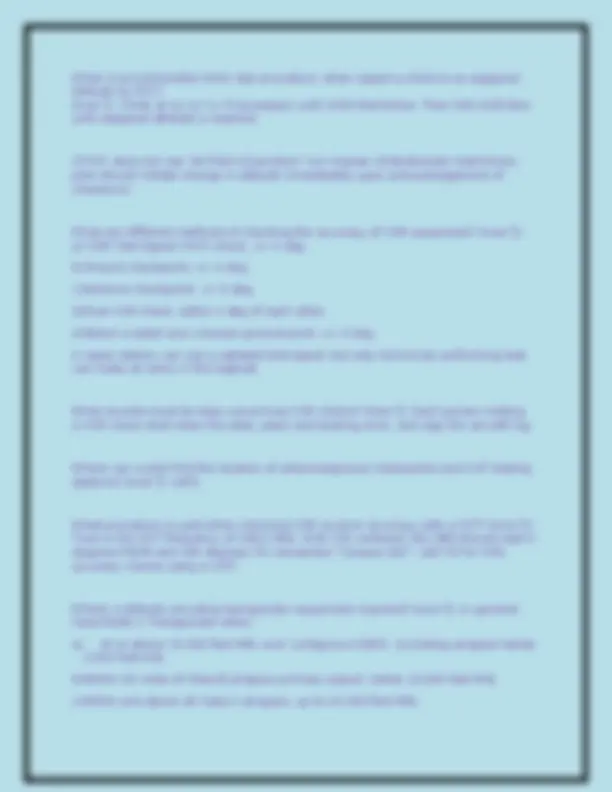
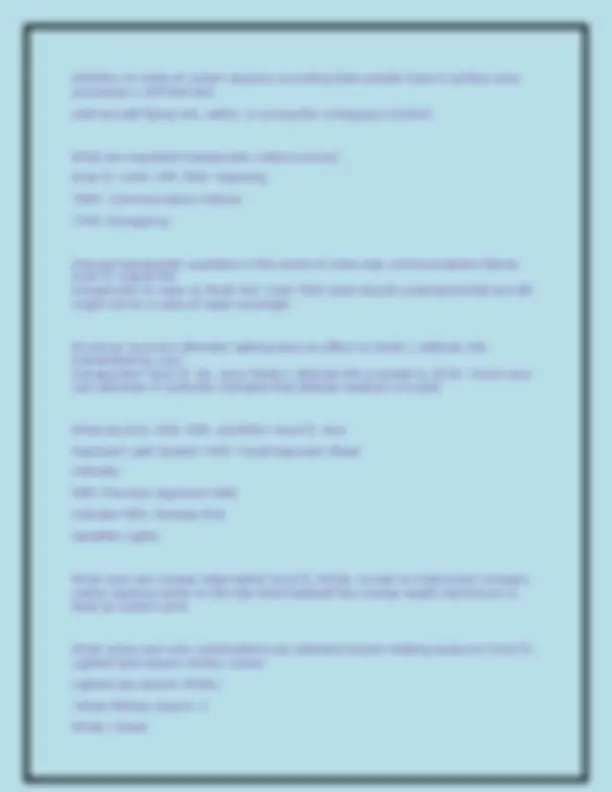
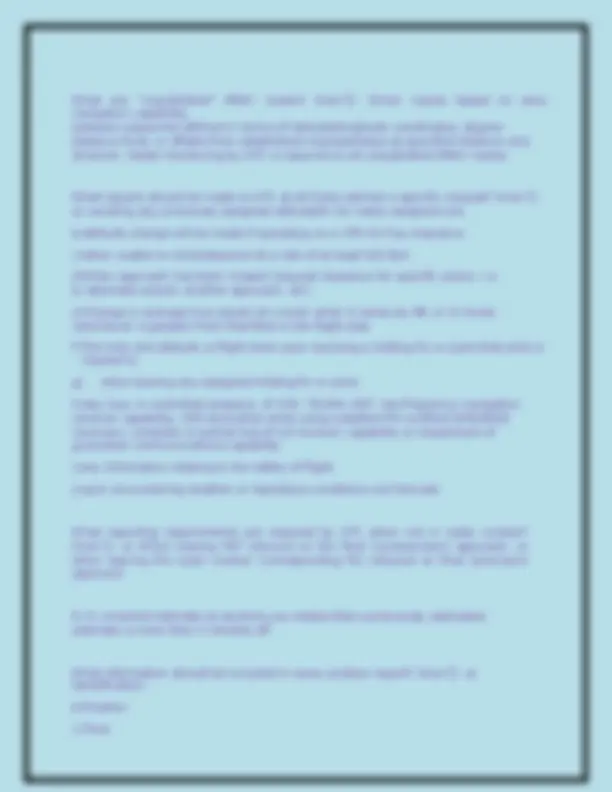
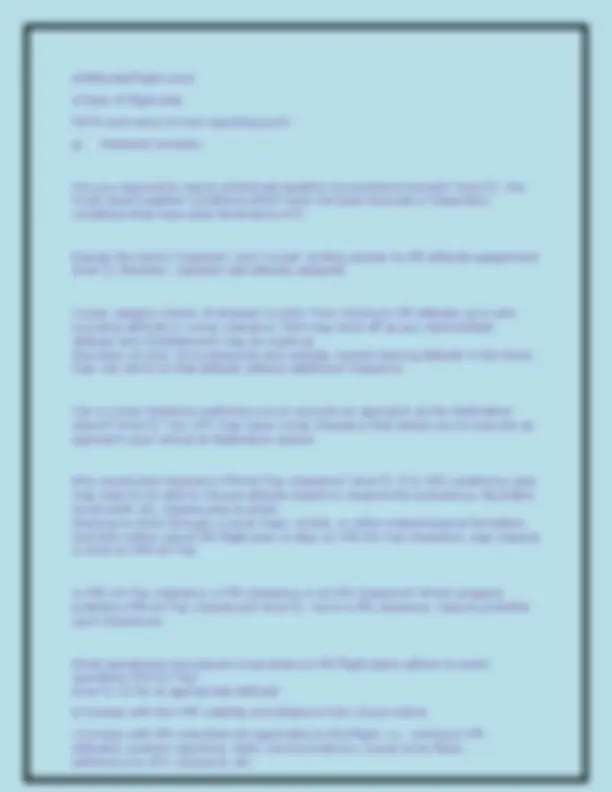
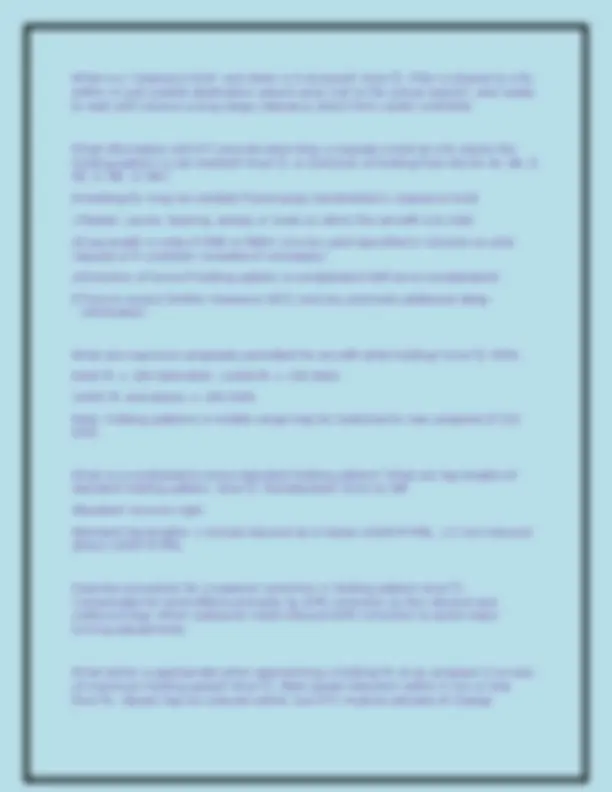
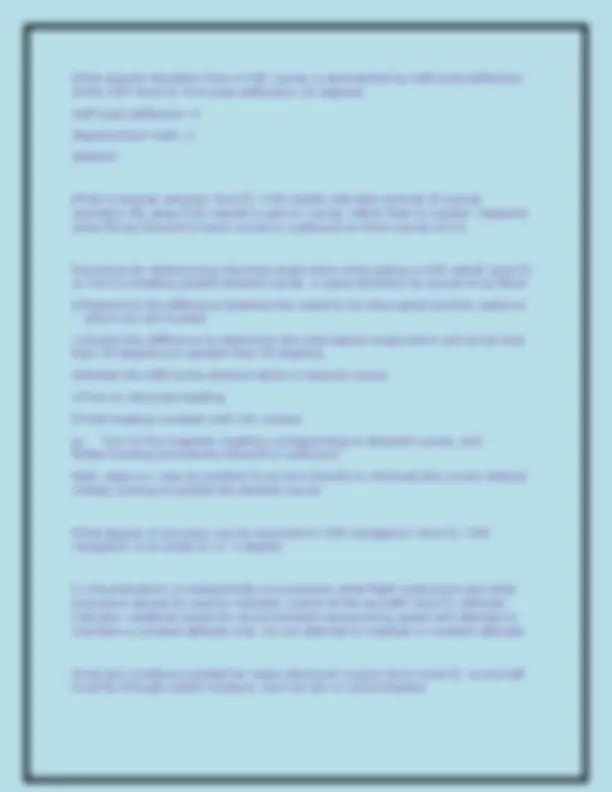
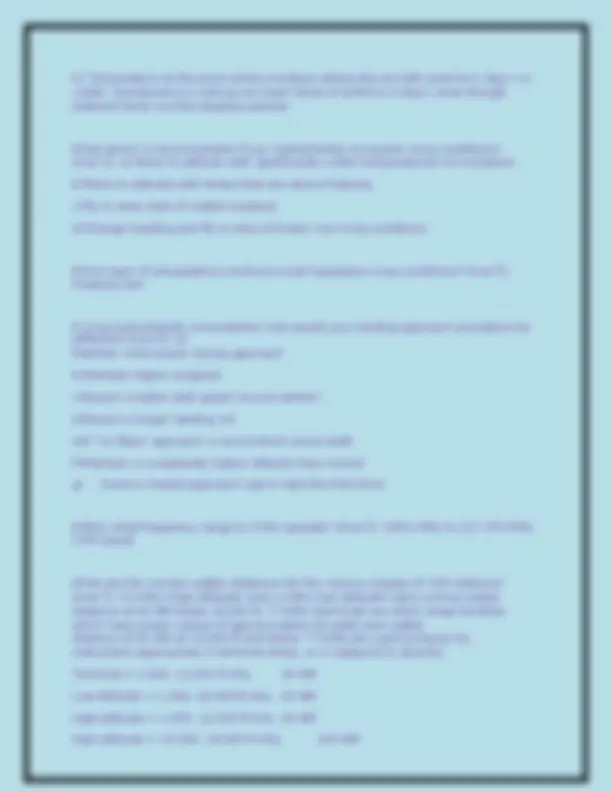
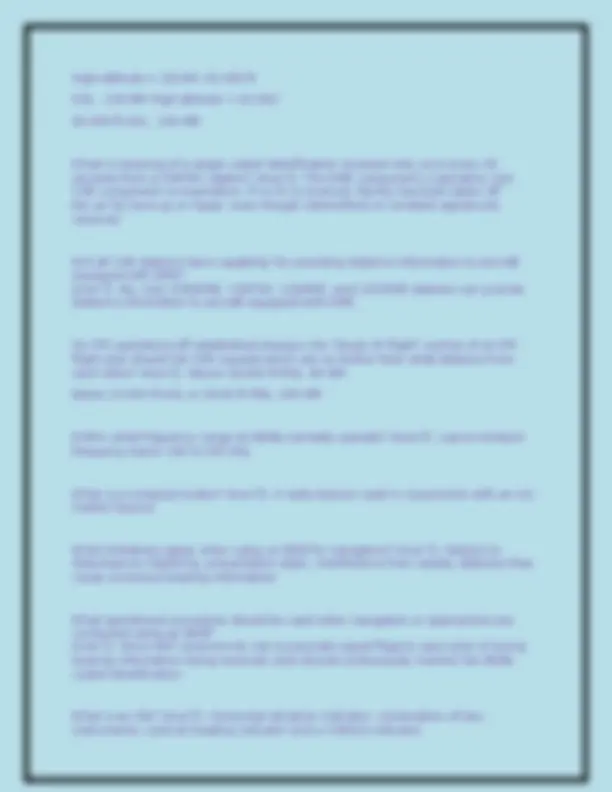
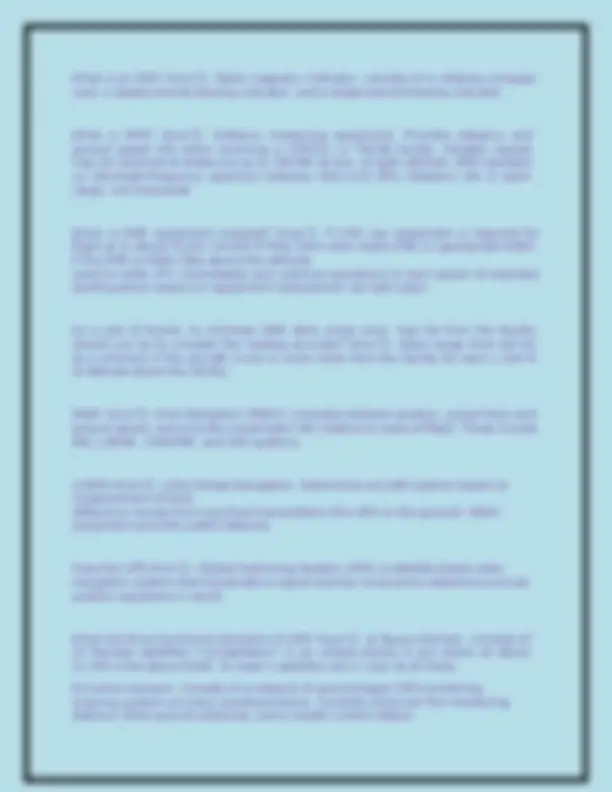
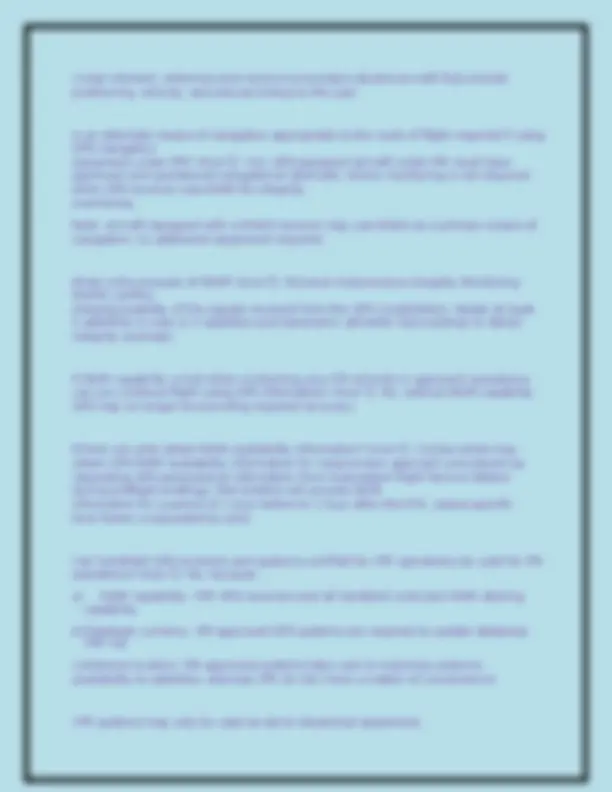
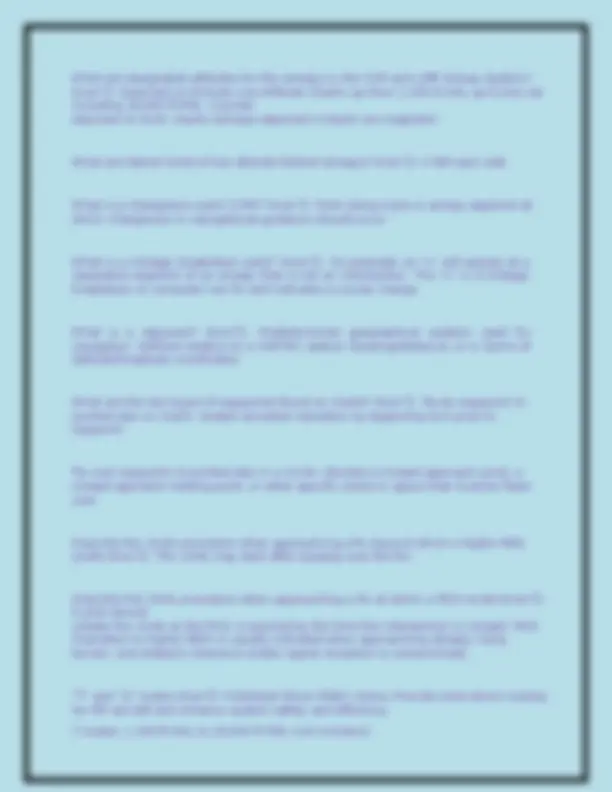
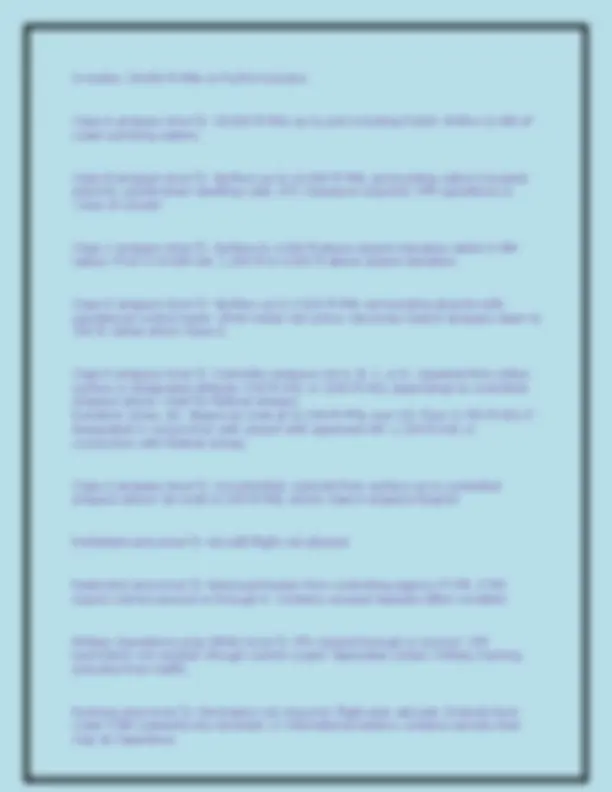
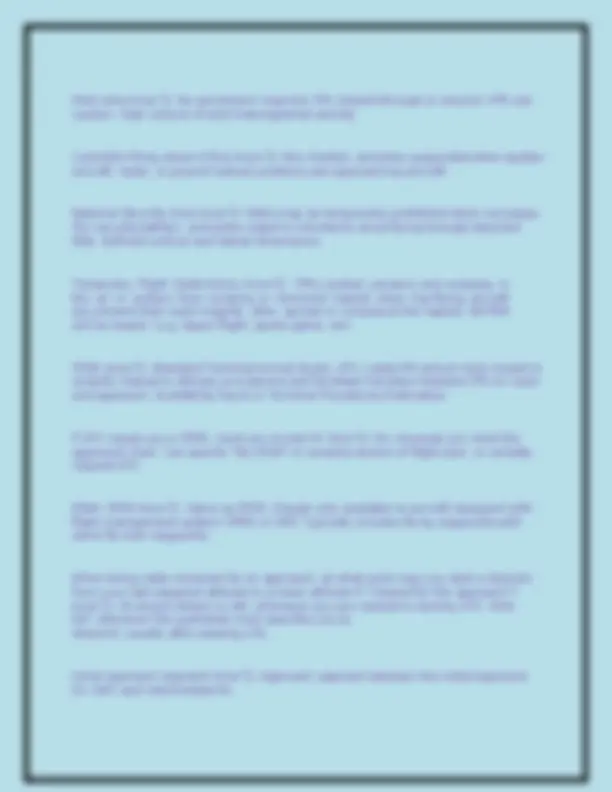
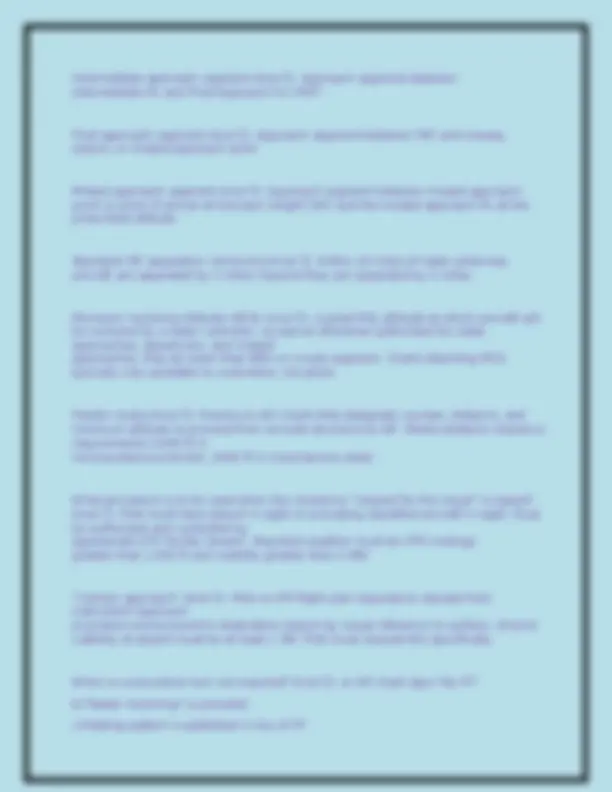
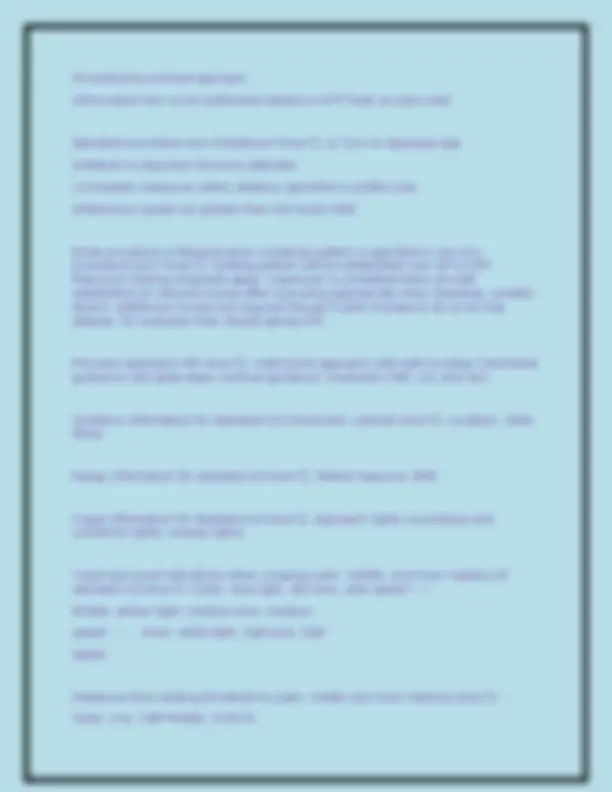
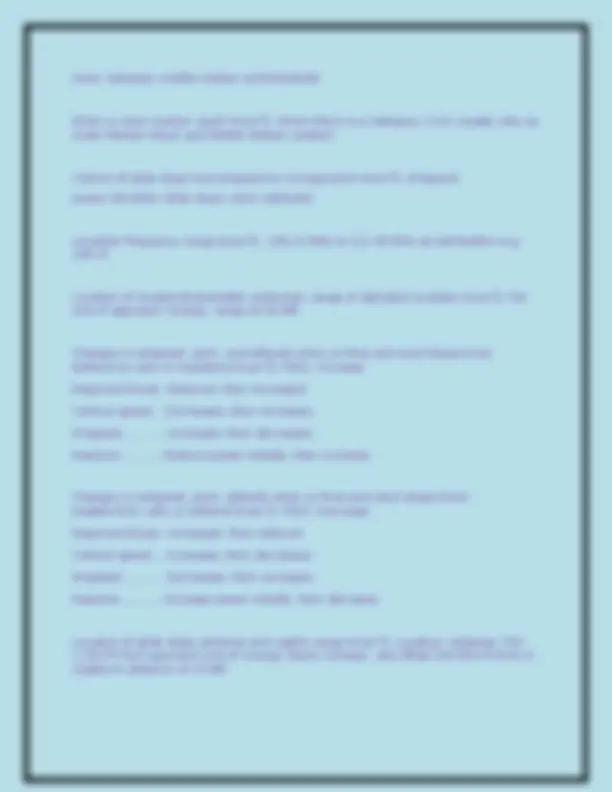
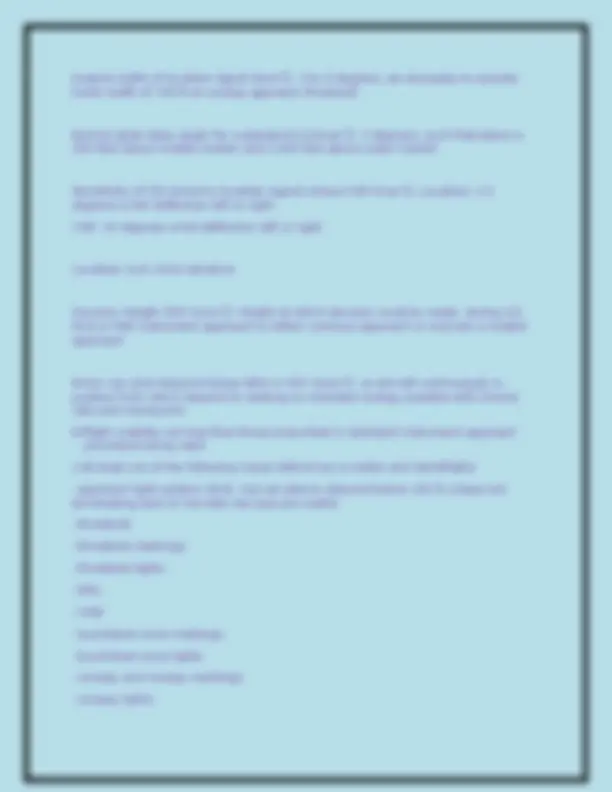
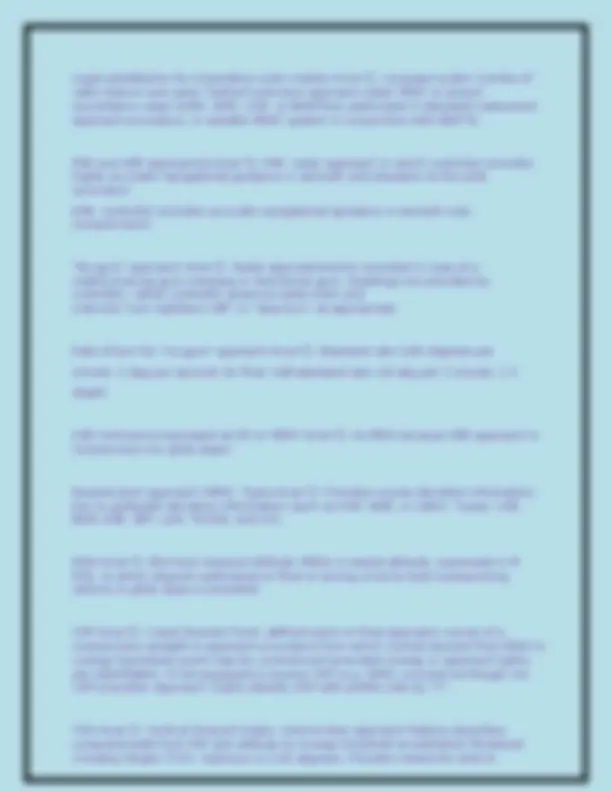

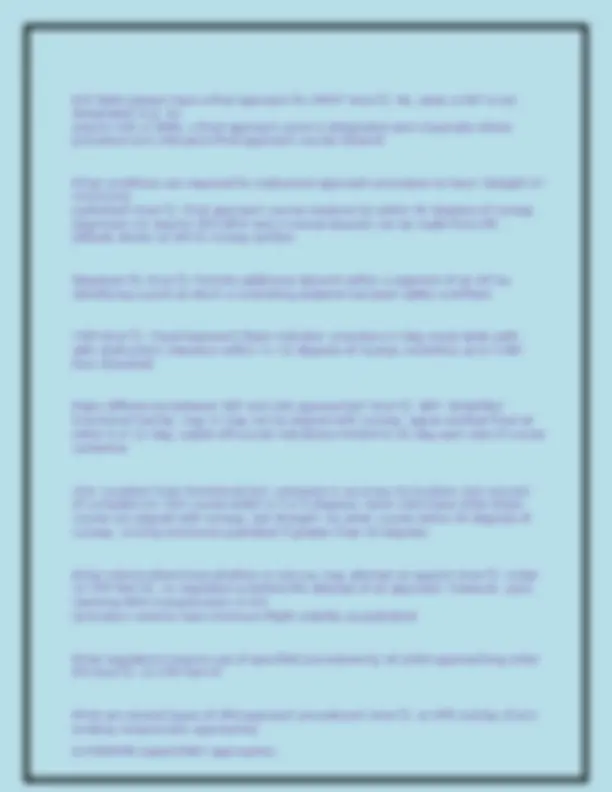

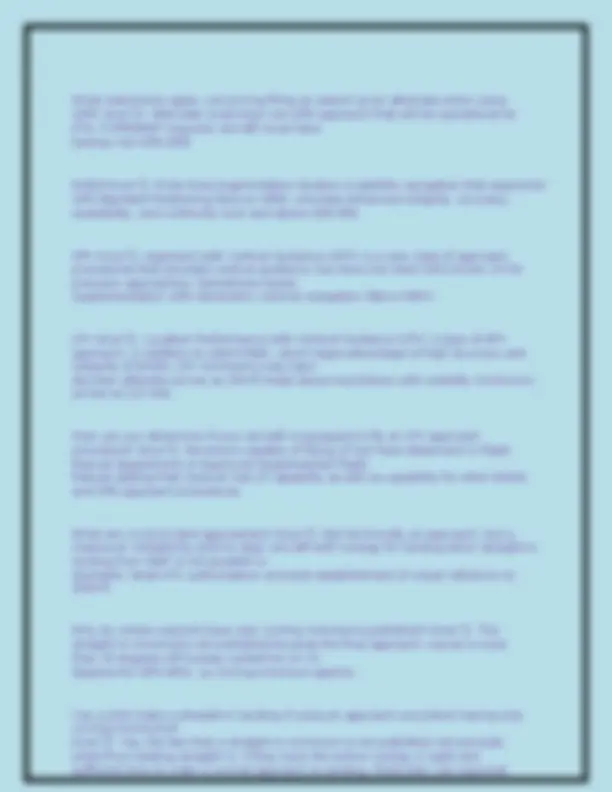

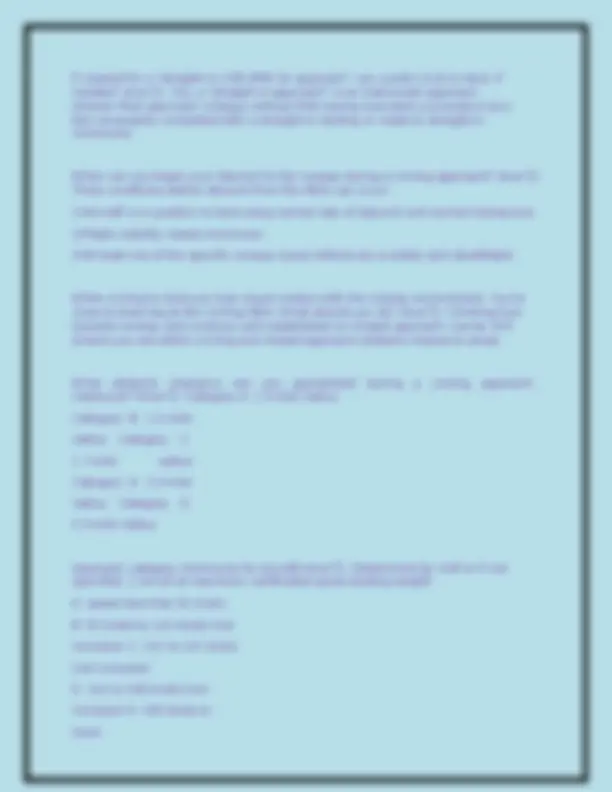
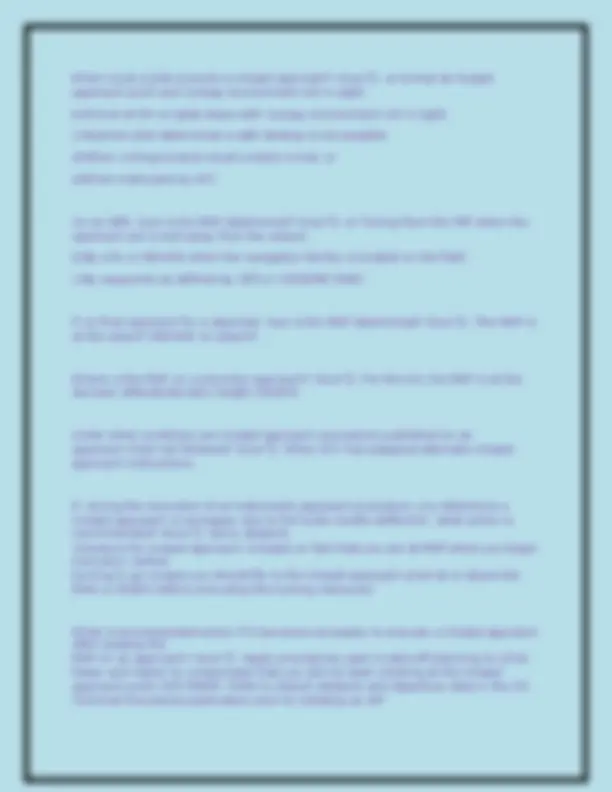
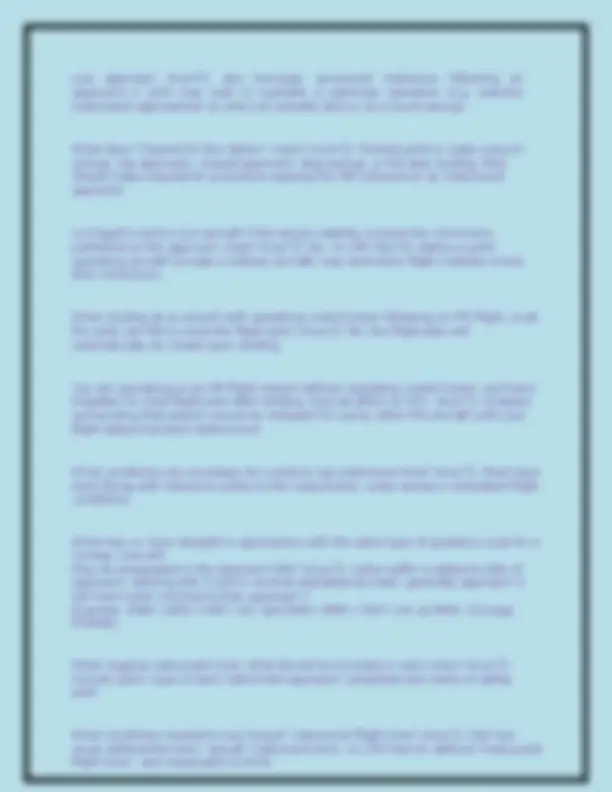
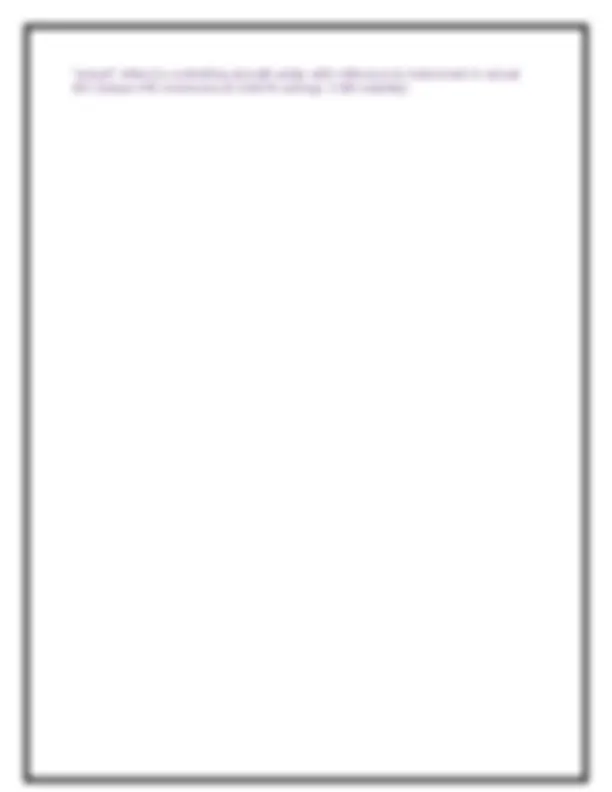

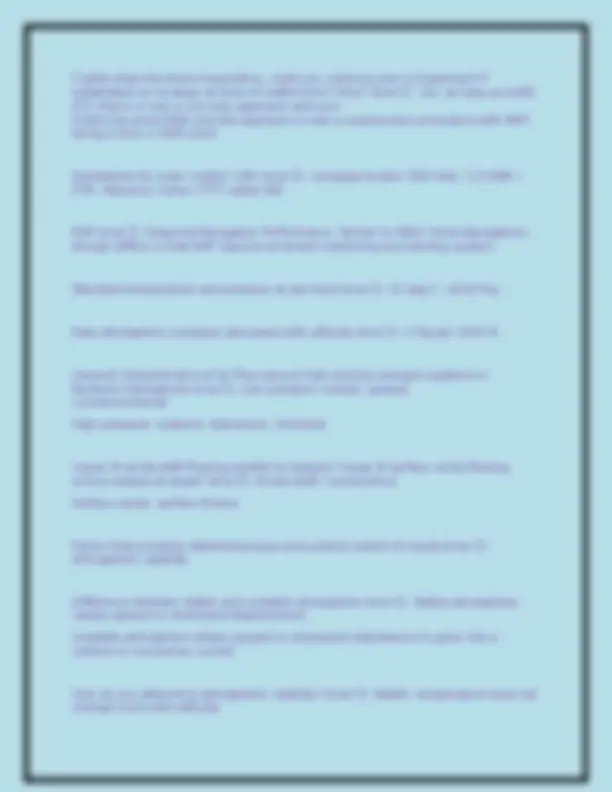
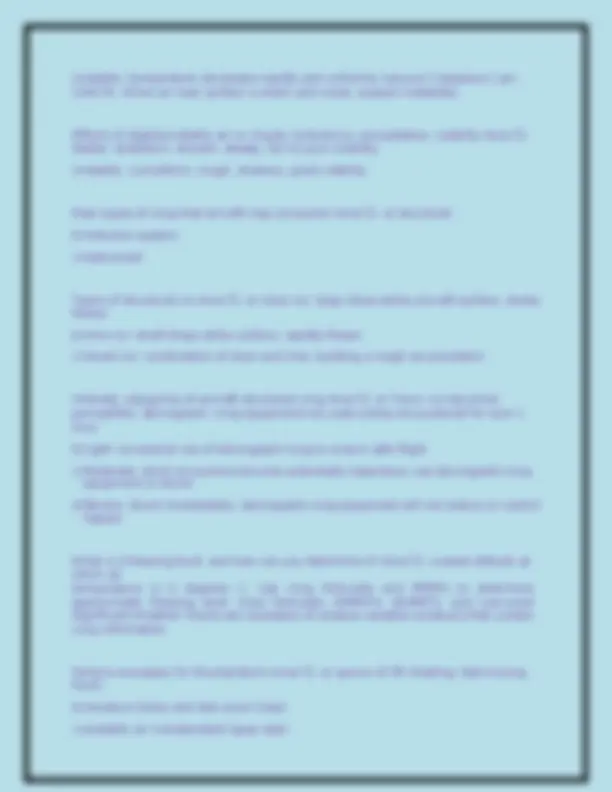
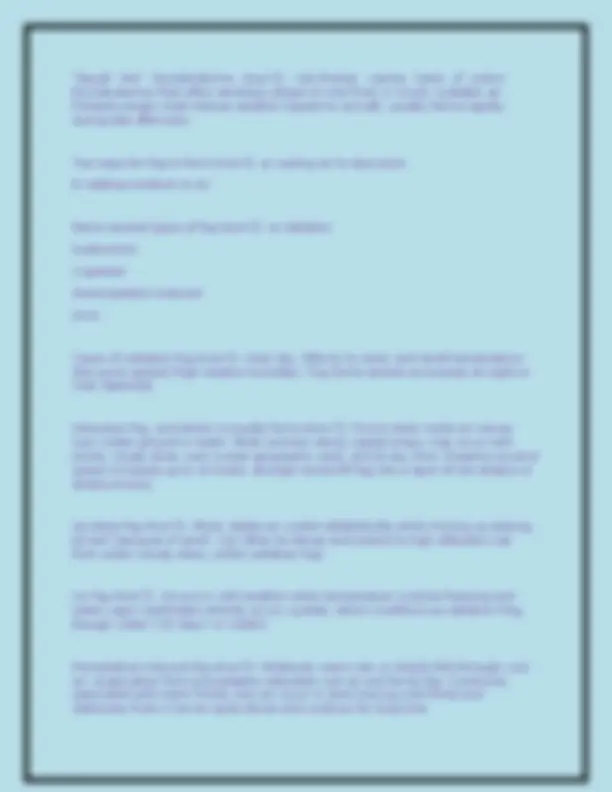
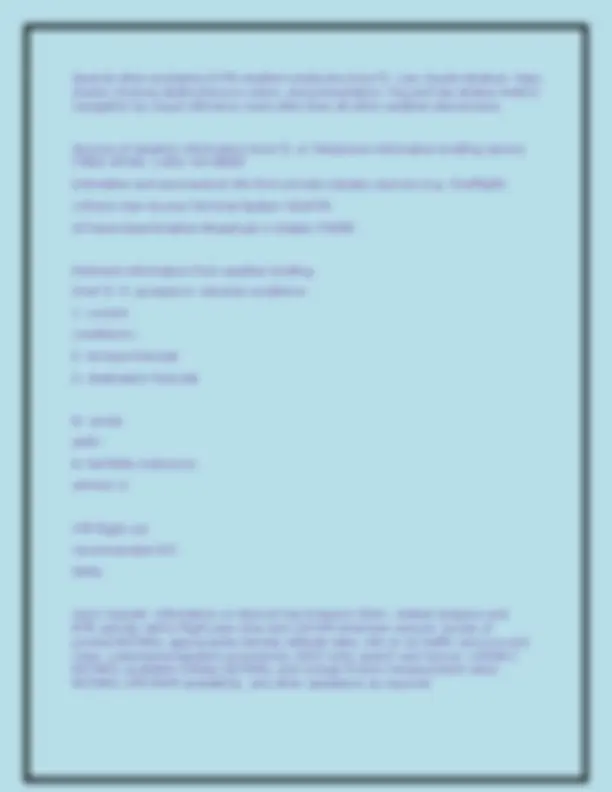
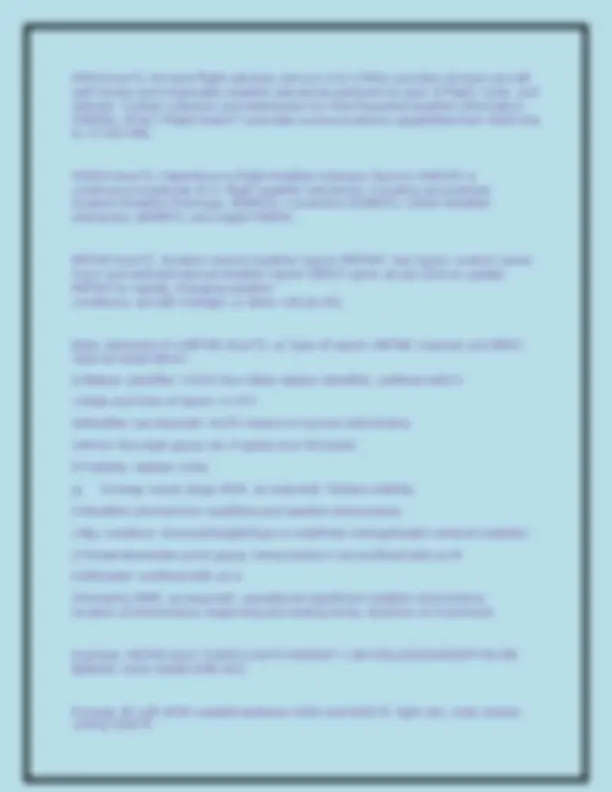
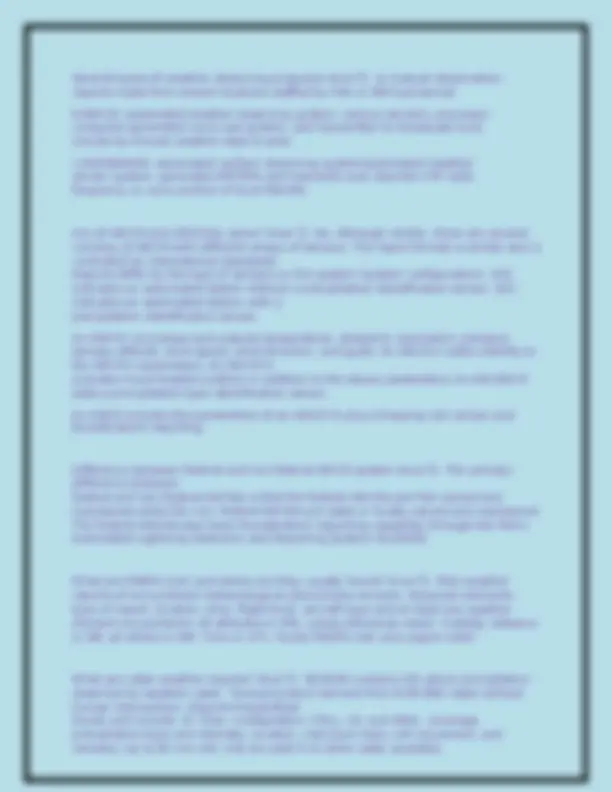
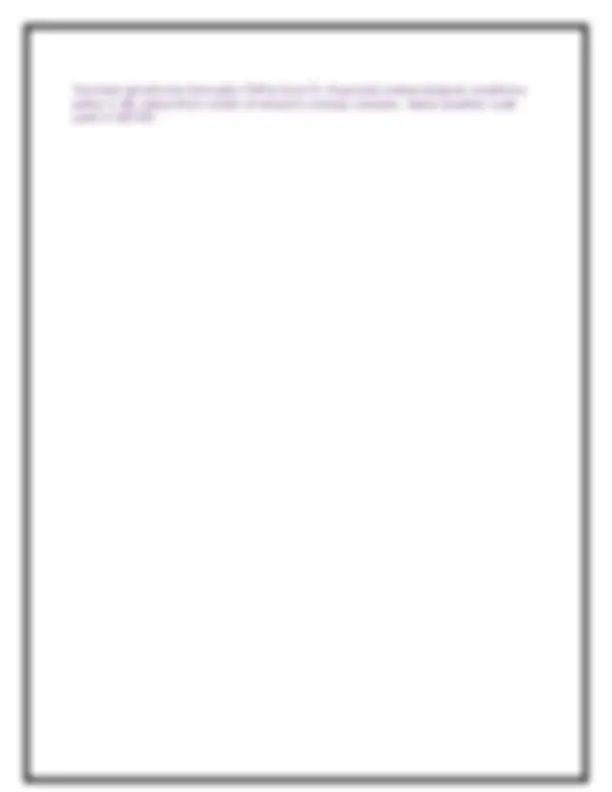
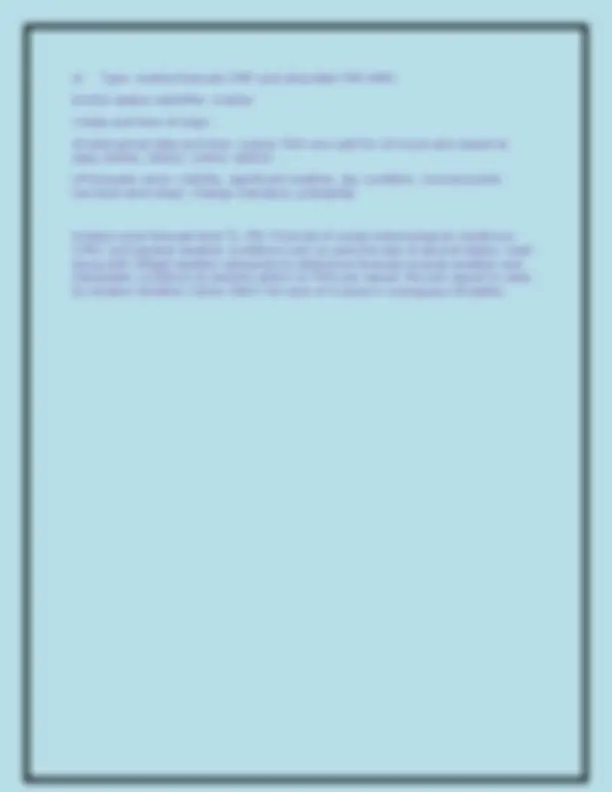


Study with the several resources on Docsity

Earn points by helping other students or get them with a premium plan


Prepare for your exams
Study with the several resources on Docsity

Earn points to download
Earn points by helping other students or get them with a premium plan
Community
Ask the community for help and clear up your study doubts
Discover the best universities in your country according to Docsity users
Free resources
Download our free guides on studying techniques, anxiety management strategies, and thesis advice from Docsity tutors
Instrument Oral Exam Questions and Answers 2025.
Typology: Exams
1 / 48

This page cannot be seen from the preview
Don't miss anything!









































IFR Flight Time Requirements Ans✔👌- a) 50 hours cross country as PIC (at least 10 in airplanes) b) 40 hours Instrument (actual or simulated) c) 15 hours instrument dual training from CFI (in same type) d) 3 hours instrument training within 60 days prior to test e) 250 NM cross-country conducted under IFR with 3 different types of approaches When is Instrument Rating required? Ans✔👌- a) On IFR Flight Plan b)In Class A Airspace c)In weather conditions less than VFR d)Under special VFR within Class B, C, D, and E surface areas between sunset and sunrise (night) Recency-of-experience requirements for IFR Ans✔👌- a) 6 instrument approaches, holding patterns, and intercepting/tracking of courses using navigation aids within the preceding six months. b) 3 take-offs and landings within preceding 90 days (full stop at night) to carry passengers c)Biennial flight review If instrument currency expires, what can be done to become current again? Ans✔👌- Within six months of expiration, complete the requirements (instrument approaches, holding patterns, and intercepting/tracking courses) with a safety pilot in simulated IFR conditions only. After that, must get a check with an examiner, authorized instructor, or FAA- approved person. Requirements of safety pilot Ans✔👌- a) Possess a current medical certificate b)Possess a private pilot's license with appropriate category/class ratings c)If flight is conducted on an IFR flight plan, safety pilot must have instrument rating Info a PIC must be familiar with before a flight Ans✔👌- All available information, including: a) weather reports and forecasts
b)fuel requirements c)alternatives if flight cannot be completed as planned d)known ATC delays e)runaway lengths of intended use f)takeoff and landing distances What are fuel requirements for flight in IFR conditions? Ans✔👌- With alternate airport: enough fuel to fly to intended airport (holding pattern included), then to alternate, then for 45 minutes after at cruise speed Without alternate airport: enough to fly to destination airport and land with 45 min fuel remaining Before conducting IFR flight using GPS equipment for navigation, what checks should be made? Ans✔👌- a) verify that GPS equipment is properly installed and certified for planned IFR b)verify that database is current (not expired) c)review the GPS NOTAM/RAIM information for planned route of flight Aircraft instruments/equipment required for IFR flight Ans✔👌- G- generator or alternator of sufficient capacity R- radios for navigation A- altimeter (sensitive) B- ball (for turn coordination) C- clock with sweep- second hand A- attitude indicator R- rate-of-turn coordinator D- directional gyro D- DME / RNAV (for flight at FL240 and above if VOR equipment necessary for planned route)
1- 100 hour A- altimeter (24 months) T- transponder ( months) E- ELT ( months) Pitot/static system (within past 24 months) Portable electronic devices on aircraft Ans✔👌- Not allowed, especially on commercial operators/carriers or any aircraft operated IFR. Exceptions: portable voice recorders, hearing aids, heart pacemakers, electric shavers, or any other portable electronic devices that will not cause interference with NAV/COM. Documents on board to be legal for IFR Ans✔👌- A- airworthiness certificate R- registration certificate R- radio station license (if international operations) O- owner's manual or operating limitations W- weight and balance data How often is GPS waypoint information updated? Ans✔👌- Every 28 days, and maintained by National Flight Data Center (NFDC) When must pilot file an IFR flight plan? Ans✔👌- Prior to departure from within or prior to entering controlled airspace: submit flight plan and receive clearance from ATC if weather conditions are below VFR minimums. File 30 minutes prior to departure to preclude delay in receiving departure clearance. When can you cancel IFR flight plan? Ans✔👌- Any time the flight is operated during VFR conditions outside of Class A. Be aware that other procedures may be applicable in area, such as designated TRSA, Class C, or Class B.
What type of aircraft equipment determines your "special equipment" suffix when filing IFR? Ans✔👌- a) radar beacon transponder b)DME equipment c)TACAN-only equipment d)Area Navigation equipment (RNAV)- LORAN, INS e)Advanced Area Navigation equipment- Global Positioning System (GPS)/Global Navigation Satellite System (GNSS) f)Reduced Vertical Separation Minimum (RVSM) authorization Block 7 of flight plan- altitude specified? Ans✔👌- Initial altitude, make subsequent requests to controller when in air Alternate Airport Requirements Ans✔👌- 1-2-3 rule: Alternate required if from 1 hour before to 1 hour after forecast arrival at destination airport has 2000 foot ceilings and less than 3 SM visibility. Alternate requirements: a) If IAP is published for alternate, use those minimums, otherwise 600-2 ( foot ceilings, 2 SM visibility) for Precision Approach, and 800-2 for Nonprecision Approach b)If no IAP has been published, ceiling and visibility minimums are those required for descent from MEA, approach, and land under basic VFR Define "ceiling" Ans✔👌- Height above Earth's surface (AGL) of lowest cloud layer defined as obscured, broken, overcast, but not thin or partial. What are preferred routes, and where can they be found? Ans✔👌- Routes in high traffic areas that ATC designates to- and from- busy airports. Found in A/FD What are Enroute Low-Altitude Charts? Ans✔👌- Provide aeronautical information for navigation under IFR conditions below 18,000 feet MSL (under Class A). Revised every 56 days. What are Enroute High-Altitude Charts? Ans✔👌- Provide information for navigation above 18,000 feet MSL. Four-color chart series includes jet route structure; VHF NAVAIDs with frequency, identification, channel, geographic coordinates; selected airports; reporting points. Revised every 56 days.
F- frequency (departure) T- transponder (squawk code) Note: ATC procedures require controller to state the Departure Procedure (DP) within Route info if applicable as well What does "clearance void time" mean? Ans✔👌- When operating from non-towered field, this is the time after which the IFR clearance is voided and pilot must report intentions to ATC (within 30 minutes) What does "hold for release" mean when included in IFR clearance? Ans✔👌- Delays the aircraft's departure for traffic management reasons. May not depart under IFR clearance until a release time or additional instructions are provided by ATC Minimums necessary for IFR takeoff under 14 CFR Part 91? Under Parts 121, 125, 129, or 135? Ans✔👌- Part 91: None Other Parts (assuming Takeoff Minimums not prescribed for that airport under Part 97): 1 SM visibility for aircraft with 2 engines or less, 1/2 SM for aircraft with 3 or more engines What is "good operating practice" in determining takeoff minimums for IFR flight? Ans✔👌- Use the minima in the Instrument Approach Procedure for that airport. If none available, use basic VFR minimums (1000 feet ceilings, 3 miles) What are DPs and why are they necessary? Ans✔👌- Departure Procedures (DPs) are preplanned IFR procedures that provide obstruction clearances from runway to enroute airway. Provides obstacle clearance protection and, at busier airports, increases efficiency by reducing communication and departure delays. Pilots under Part 91 are strongly encouraged to file and fly a DP at night, during marginal VMC and IMC, when one is available. What are two types of DPs? Ans✔👌- a) Obstacle Departure Procedures (ODPs)- textually/graphically, obstruction clearance via least burdensome route, No need for ATC clearance unless alternate departure procedure (SID or radar vector) has been specifically assigned by ATC. b) Standard Instrument Departures (SIDs)-
always graphically, obstruction clearance and transition, system enhancement and reduce pilot/controller workload, ATC clearance must be received prior What criteria are used to provide obstruction clearance during departure? Ans✔👌- Based on: pilot crossing departure end of runway > 35 ft above that elevation, climbing to 400 ft above runway before making initial turn maintaining minimum climb gradient of 200 ft/NM (unless required to level off by crossing restriction). Gradient may vary based on obstacles. Where are DPs located? Ans✔👌- Listed by airport in "IFR Take-Off Minimums and Departure Procedures," Section C of the Terminal Procedures Publications Must you accept a SID if assigned one? Ans✔👌- No. Since they're only graphical, if the pilot does not have access or does not have equipment to fly the SID, he or she can notify ATC verbally (less preferred) or when filing the flight plan specify "NO SID". How does pilot determine if takeoff minimums are not standard and/or departure procedures are published for an airport? Ans✔👌- A "triangle T" or "trouble T" (black triangle with a T inside it) will be placed in notes sections of the instrument procedure chart. Signifies non-standard take-off minimums. When a DP specifies a climb gradient in excess of 200 ft/NM, what significance should this have? Ans✔👌- There will be no obstacle departure procedure (ODP) if pilot can turn in any direction from a runway and remain clear of obstacles (satisfies diverse departure criteria). SID may be provided for ATC reasons. Otherwise, the DP was designed with a steeper than normal gradient or specifies departure route for purposes of avoiding obstacles near runway end. Climb gradient of 300 ft/NM at a ground speed of 100 knots requires what rate of climb? Ans✔👌- 300 * (100/60) = 500 ft/min
d)Within 10 miles of certain airports, excluding that outside Class D surface area and below 1,200 feet AGL e)All aircraft flying into, within, or across the contiguous US ADIZ What are important transponder codes to know? Ans✔👌- 1200- VFR 7500- Hijacking 7600- Communications Failure 7700- Emergency Discuss transponder operation in the event of a two-way communications failure Ans✔👌- Adjust the transponder to reply on Mode A/3, Code 7600 (pilot should understand that aircraft might not be in area of radar coverage) Would an incorrect altimeter setting have an effect on Mode C altitude info transmitted by your transponder? Ans✔👌- No, since Mode C altitude info is preset to 29.92. Check your own altimeter if controller indicates that altitude readout is invalid. What are ALS, VASI, PAPI, and REIL? Ans✔👌- ALS- Approach Light System VASI- Visual Approach Slope Indicator PAPI- Precision Approach Path Indicator REIL- Runway End Identifier Lights What color are runway edge lights? Ans✔👌- White, except on instrument runways, yellow replaces white on the last 2000 feet/half the runway length (whichever is less) as caution zone What colors and color combinations are standard airport rotating beacons? Ans✔👌- Lighted land airport- White / Green Lighted sea airport- White / Yellow Military airport- 2 White / Green
What does operation of rotating beacon at airport during daylight hours mean? Ans✔👌- In Class B, C, D, and E surface areas, operation of beacon during daylight indicates below VFR conditions (under 1000 ft ceilings, less than 3 SM visibility). ATC clearance then required to land, takeoff and fly in the traffic pattern. What are runway touchdown zone markings? Ans✔👌- Identify touchdown zone for landing- provides distance information in 500-ft increments (one, two, three rectangular bars arranged symmetrically in pairs about runway centerline). What is purpose of runway aiming point markings? Ans✔👌- Visual aiming point for landing aircraft. Two rectangular markings (broad white stripe, each side of centerline and approximately 1000 ft from landing threshold. How far down a runway does the touchdown zone extend? Ans✔👌- First 3000 feet of runway, beginning at threshold. (Used to determine touchdown zone elevation in the development of straight-in landing minimums for instrument approaches) What is RWSL? Ans✔👌- Runway Status Light System- fully automated system that provides runway status to pilots/surface vehicle operators to clearly indicate when it is unsafe to enter, cross or takeoff from runway. Two statuses: ON- lights illuminated red, OFF- lights not illuminated Does lack of illumination of RWSL give a pilot permission to enter, cross, or takeoff from runway? Ans✔👌- No, RWSL is independent safety enhancement so you still need ATC clearance to do these things. What are important altitudes to know? Ans✔👌- MEA, MOCA, MCA, MRA, MAA, OROCA MEA Ans✔👌- Minimum En-Route Altitude: ensures acceptable navigational signals & obstacle clearance MOCA Ans✔👌- Minimum Obstacle Clearance Altitude: ensures obstacle clearance requirements (on routes) & navigational signal coverage within 25 SM (22 NM) of VOR
What are "unpublished" RNAV routes? Ans✔👌- Direct routes based on area navigation capability, between waypoints defined in terms of latitude/longitude coordinates, degree- distance fixes, or offsets from established routes/airways at specified distance and direction. Radar monitoring by ATC is required on all unpublished RNAV routes. What reports should be made to ATC at all times without a specific request? Ans✔👌- a) vacating any previously assigned altitude/FL for newly assigned one b)altitude change will be made if operating on a VFR-On-Top clearance c)when unable to climb/descend at a rate of at least 500 fpm d)When approach has been missed (request clearance for specific action; i.e. to alternate airport, another approach, etc) e)Change in average true speed (at cruise) when it varies by 5% or 10 knots (whichever is greater) from that filed in the flight plan f)The time and altitude or flight level upon reaching a holding fix or point that pilot is cleared to g) when leaving any assigned holding fix or point h)any loss, in controlled airspace, of VOR, TACAN, ADF, low-frequency navigation receiver capability, GPS anomalies while using installed IFR-certified GPS/GNSS receivers, complete or partial loss of ILS receiver capability or impairment of ground/air communications capability i)any information relating to the safety of flight j)upon encountering weather or hazardous conditions not forecast What reporting requirements are required by ATC when not in radar contact? Ans✔👌- a) When leaving FAF inbound on the final (nonprecision) approach, or when leaving the outer marker (corresponding fix) inbound on final (precision) approach b) A corrected estimate at anytime you realize that a previously estimated estimate is more than 3 minutes off What information should be included in every position report? Ans✔👌- a) Identification b)Position c)Time
d)Altitude/Flight Level e)Type of flight plan f)ETA and name of next reporting point g) Pertinent remarks Are you required to report unforecast weather encountered enroute? Ans✔👌- Yes, must report weather conditions which have not been forecast or hazardous conditions that have been forecast to ATC. Explain the terms "maintain" and "cruise" as they pertain to IFR altitude assignment Ans✔👌- Maintain: maintain last altitude assigned Cruise: assigns a block of airspace to pilot, from minimum IFR altitude up to and including altitude in cruise clearance. Pilot may level off at any intermediate altitude and climb/descent may be made at discretion of pilot. Once descends and verbally reports leaving altitude in the block, may not return to that altitude without additional clearance. Can a cruise clearance authorize you to execute an approach at the destination airport? Ans✔👌- Yes. ATC may issue cruise clearance that allows you to execute an approach upon arrival at destination airport. Why would pilot request a VFR-On-Top clearance? Ans✔👌- If in VFR conditions, pilot may want to be able to choose altitude based on reasons like turbulence, favorable winds aloft, etc. Applies also to pilots desiring to climb through a cloud, haze, smoke, or other meteorological formation and then either cancel IFR flight plan or stay on VFR-On-Top Clearance, may request a climb to VFR-On-Top Is VFR-On-Top clearance a VFR clearance or an IFR clearance? Which airspace prohibits VFR-On-Top clearances? Ans✔👌- Yes it is IFR clearance. Class A prohibits such clearances. What operational procedures must pilots on IFR flight plans adhere to when operating VFR-On-Top? Ans✔👌- a) Fly at appropriate altitude b)Comply with the VFR visibility and distance from cloud criteria c)Comply with IFR rules that are applicable to this flight; i.e., minimum IFR altitudes, position reporting, radio communications, course to be flown, adherence to ATC clearance, etc
Why is it important for pilot to receive an EFC time with initial holding instructions? Ans✔👌- If you lose two-way radio communication, EFC allows you to depart holding fix at a definite time. Plan last lap of holding pattern to leave fix as close as possible to exact time. Describe different recommended entry methods for holding Ans✔👌- Parallel Teardrop Direct If assigned a DME/GPS hold, what procedures should be used? Ans✔👌- Same entry and holding procedures, except that distances (NM) are used in lieu of time values. Controller or IAP chart will specify length of outbound leg. When does the timing for the outbound leg in a holding pattern begin? Ans✔👌- Begins over/abeam the fix, whichever occurs later. If abeam position cannot be determined, start timing when turn to outbound is completed. What regulations apply concerning supplemental oxygen? Ans✔👌- a) 12,500- 14,000 ft MSL: crew must use supplemental oxygen after 30 minutes b)14,000 ft MSL- 15,000 ft MSL: crew must use supplemental oxygen continuously c)above 15,000 ft MSL: crew and passengers must be provided with supplemental oxygen When may the PIC of aircraft deviate from ATC clearance? Ans✔👌- Only in case of emergency If emergency action requires deviation from 14 CFR Part 91, must a pilot submit a written report, and if so, to whom? Ans✔👌- Only if requested by ATC, submitted within 48 hours to manager of that ATC facility Concerning two-way radio communications failure in VFR, what is procedure for altitude, route, leaving holding fix, descent for approach, and approach selection? Ans✔👌- VFR: Continue the flight under VFR and land as soon as practicable Concerning two-way radio communications failure in IFR, what is procedure for altitude, route, leaving holding fix, descent for approach, and approach selection? Ans✔👌- IFR:
a) Route A- Assigned...by route assigned in last ATC clearance V- Vectored...go direct from point of radio failure to fix, route, airway in vector clearance E- Expected...by route that ATC has advised may be expected F- Filed...by the route filed in flight plan b)Altitude (highest of following altitudes for the route segment being flown) M- Minimum...minimum altitude for IFR operations E- Expected...altitude/flight level ATC has advised to expect in further clearance A- Assigned...altitude/flight level assigned in last ATC clearance c)Leave clearance limit:
b) Temperature at the point where moisture strikes the aircraft must be 0 deg C or colder. Aerodynamics cooling can lower temp of airfoil to 0 deg C even though ambient temp is a few degrees warmer What action is recommended if you inadvertently encounter icing conditions? Ans✔👌- a) Move to altitude with significantly colder temperatures (no moisture) b)Move to altitude with temps that are above freezing c)Fly to area clear of visible moisture d)Change heading and fly to area of known non-icing conditions Which type of precipitation produces most hazardous icing conditions? Ans✔👌- Freezing rain If icing inadvertently encountered, how would your landing approach procedure be different? Ans✔👌- a) Maintain more power during approach b)Maintain higher airspeed c)Expect a higher stall speed (occurs earlier) d)Expect a longer landing roll e)A "no flaps" approach is recommend (avoid stall) f)Maintain a consistently higher altitude than normal g) Avoid a missed approach (get it right the first time) Within what frequency range to VORs operate? Ans✔👌- 108.0 MHz to 117.975 MHz (VHF band) What are the normal usable distances for the various classes of VOR stations? Ans✔👌- H-VORs (high altitude) and L-VORs (low altitude) have normal usable distance of 40 NM below 18,000 ft. T-VORs (terminal) are short range facilities which have power output of approximately 50 watts and usable distance of 25 NM at 12,000 ft and below. T-VORs are used primarily for instrument approaches in terminal areas, or or adjacent to airports. Terminal = 1,000- 12,000 ft AGL 25 NM Low-Altitude = 1,000- 18,000 ft AGL 40 NM High-altitude = 1,000- 14,500 ft AGL 40 NM High-altitude = 14,500- 18,000 ft AGL 100 NM
High-altitude = 18,000- 45,000 ft AGL...130 NM High-altitude = 45,000- 60,000 ft AGL...100 NM What is meaning of a single coded identification received only once every 30 seconds from a VORTAC station? Ans✔👌- The DME component is operative, but VOR component is inoperative. If no ID is received, facility has been taken off the air for tune-up or repair, even though intermittent or constant signals are received. Will all VOR stations have capability for providing distance information to aircraft equipped with DME? Ans✔👌- No, only VOR/DME, VORTAC, ILS/DME, and LOC/DME stations can provide distance information to aircraft equipped with DME. For IFR operations off established airways, the "Route of Flight" portion of an IFR flight plan should list VOR navaids which are no further than what distance from each other? Ans✔👌- Above 18,000 ft MSL: 80 NM Below 14,500 ft AGL or 18,00 ft MSL: 200 NM Within what frequency range do NDBs normally operate? Ans✔👌- Low-to-medium frequency band- 190 to 535 kHz What is a compass locator? Ans✔👌- A radio beacon used in conjunction with an ILS marker beacon What limitations apply when using an NDB for navigation? Ans✔👌- Subject to disturbances (lightning, precipitation static, interference from nearby stations) that cause erroneous bearing information What operational procedure should be used when navigation or approaches are conducted using an NDB? Ans✔👌- Since ADF receivers do not incorporate signal flags to warn pilot of wrong bearing information being received, pilot should continuously monitor the NDBs coded identification. What is an HSI? Ans✔👌- Horizontal situation indicator- combination of two instruments: vertical heading indicator and a VOR/ILS indicator.